The hydraulic ram is a pump which raises water without any external power for its operation. The hydraulic ram works on the principle of the water hammer. In this article, let us discuss the construction and the working principle of the Hydraulic Ram (Water Hammer).
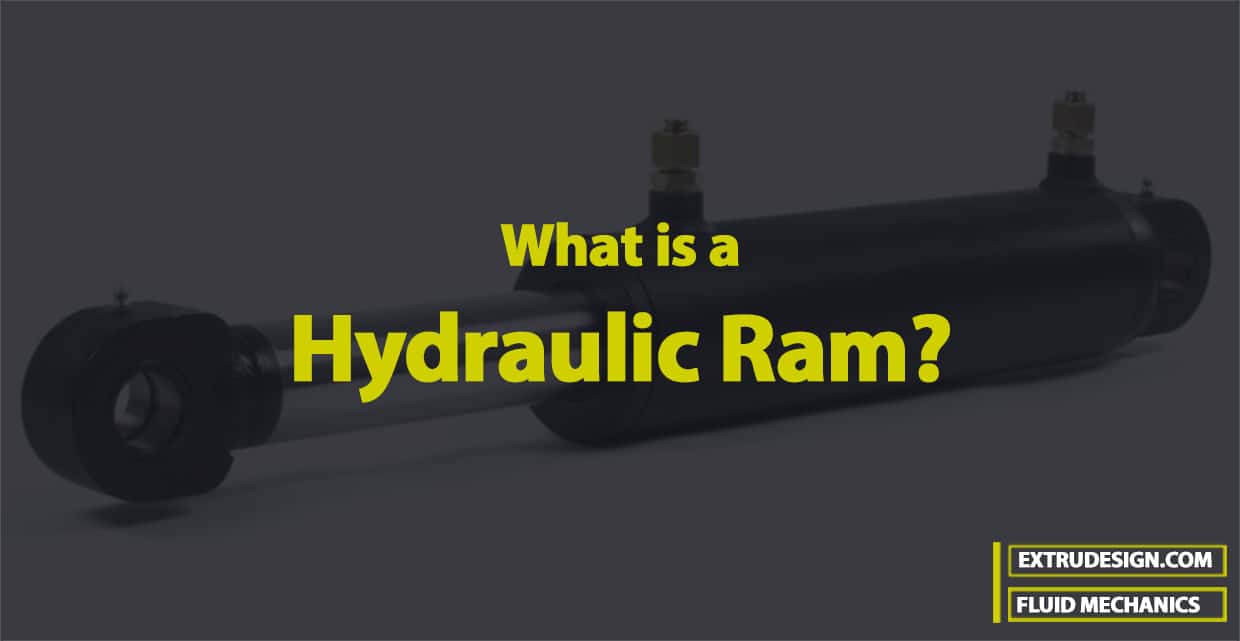
Fluid Systems
A fluid system is defined as a device in which power is transmitted with the help of a fluid which may be liquid (water or oil) or a gas (air) under pressure. Most of these devices are based on the principles of fluid statics and fluid kinematics. Following are the different devices that come under the Fluid systems.
- The hydraulic press
- The hydraulic accumulator
- The hydraulic intensifier
- The hydraulic Ram
- The hydraulic Lift
- The hydraulic Crane
- The fluid or hydraulic coupling
- The fluid or hydraulic torque converter
- The Air Lift pump
- The gear-wheel pump
Hydraulic Ram
The hydraulic ram is a pump that raises water without any external power for its operation. When a large quantity of water is available at a small height, a small quantity of water can be raised to a greater height with the help of a hydraulic ram. It works on the principle of a water hammer.
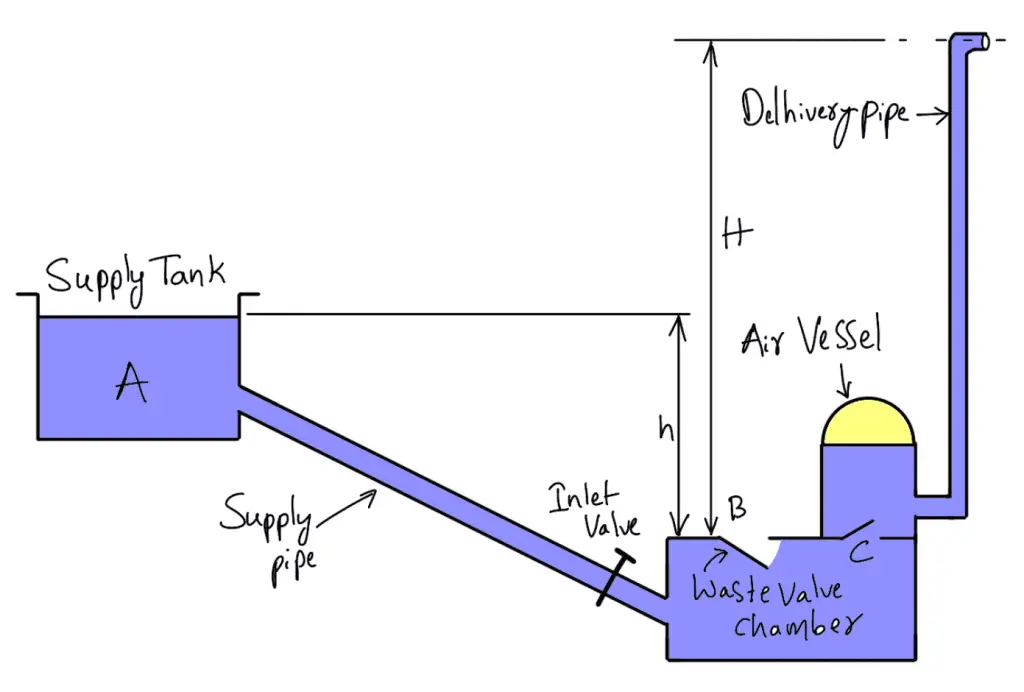
The above schematic diagram shows the main components of the hydraulic ram.
- When the inlet valve fitted to the supply pipe is opened, water starts flowing from the supply tank to the chamber, which has two valves at B and C.
- Valve B is the waste valve and valve C is the delivery valve. Valve C is fitted to an air vessel.
- As the water comes into the chamber from the supply tank, the water level rises and waste valve B starts moving upward.
- A stage comes when the waste valve B suddenly closes. This sudden closure of the waste valve creates high pressure inside the chamber.
- This high-pressure force opens the delivery valve C.
- The water from the chamber enters the air vessel and compresses the air inside the air vessel.
- This compressed air exerts a force on the water in the air vessel and a small quantity of water is raised to a greater height as shown in the above schematic diagram.
When the water in the chamber loses its momentum, the waste valve B opens in the downward direction and the flow of water from the supply tank starts flowing to the chamber and the cycle will be repeated.
Let
W = Weight of water flowing per second into the chamber
w = Weight of water raised per second
h = Height of water in the supply tank above the chamber
H = Height of water raised from the chamber
The energy supplied by the supply tank to ram = Weight of water supplied × Height of supply water
= W × h
The energy delivered by the ram = Weight of water raised × Height through which water is raised
= w × H
The efficiency of the hydraulic ram,

…. Equation (a)
The above expression of efficiency was given by D’ Aubuisson and is hence known as D’ Aubuisson’s efficiency.
Rankine gave another form of the above efficiency. According to him, the weight of water (w) is raised to a height of( H- h) and not H. The water is initially at the height of h from the ram and hence the water is only raised to a height equal to (H- h).
Hence according to Rankine:
Energy delivered by the ram = W × (H- h)
The energy supplied = (W – w) h
The efficiency,
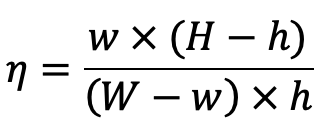
…. Equation (b)
Equation (b) is known as Rankine’s efficiency.
The above two efficiencies, in terms of discharge, are written as,
D’ Aubuisson’s
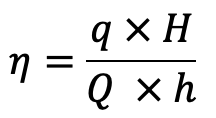
…. Equation (c)
Rankine’s
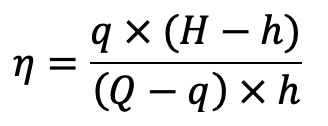
…. Equation (d)
where
q = Discharge of delivery pipe,
Q = Discharge through supply pipe.
Example Problem on Hydraulic Ram Efficiency
Problem Statement: The water is supplied at the rate of 0.02 m3 per second from a height of 3m to a hydraulic ram, which raises 0.002 m3/s to a height of 20m from the ram. Determine D’ Aubuisson’s and Rankine’s efficiencies of the hydraulic ram.
Answer:
Given data
Discharge through a supply pipe, Q = 0.02 m3
Supply head, h = 3 m
Discharge raised, q = 0.002 m3/s
Height of water raised from hydraulic ram, H = 20 m
From D’ Aubuisson’s equation (c)

D’ Aubuisson’s efficiency of the hydraulic ram is 66.67%.
Rankine’s efficiency is given by equation (d) as

Rankine’s efficiency of the hydraulic ram is 62.96%.
This is all about the HydraulicRam and how we can calculate the Hydraulic Ram Efficiency. Let us know what you think about this article in the comment section below.

Excellent article, Sundar! A hydraulic ram indeed has to deal with high pressure at various points. Therefore, it’s important to use forged hydraulic cylinder components since they offer the highest impact resistance. That’s because forging improves the directional strength that the grain structure has. As a result, forgings are ideal for building a high-quality and durable hydraulic ram to suit its rigorous application.